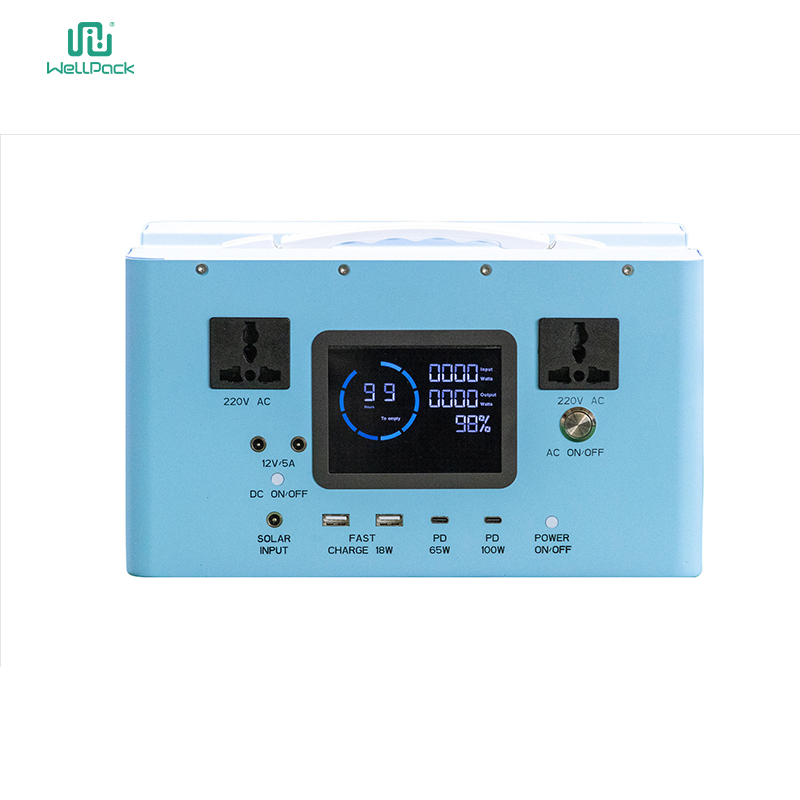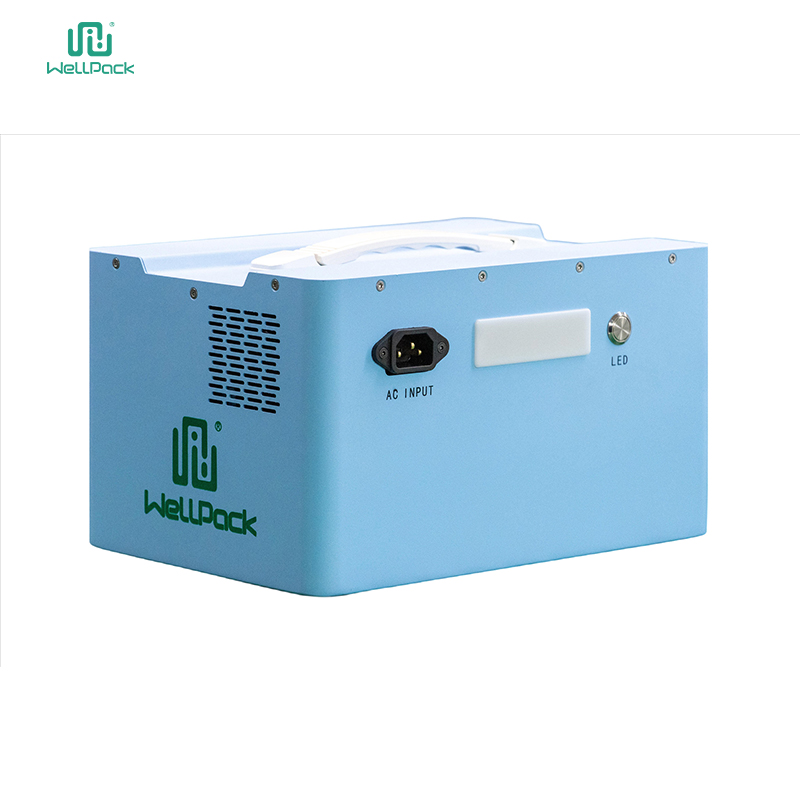
How to Effectively Utilize the Better Tech Portable Power Station WPP1500 to Address Power Shortages in Remote Educational Facilities in Peru
2024-11-01 18:00How to Effectively Utilize the Better Tech Portable Power Station WPP1500 to Address Power Shortages in Remote Educational Facilities in Peru
As global attention to equal access to educational resources and sustainable development grows, ensuring that remote educational facilities have a stable and reliable power supply is becoming increasingly important. In Peru, particularly in remote educational institutions located in the Andes and the Amazon rainforest, the challenge of unstable or even nonexistent power supply is common. This not only affects the normal conduct of teaching activities but also restricts the quality of students' learning and the overall level of educational development. This article will explore the issue of power shortages through a practical scenario of a remote educational facility in Peru and detail how the Better Tech portable power station WPP1500 can provide effective solutions for these institutions, ensuring stable and efficient power supply.
I. Current Status and Challenges of Power Supply in Remote Educational Facilities in Peru
1.1 Instability of Power Supply
In many remote areas of Peru, the coverage of traditional power supply systems is low, and power supply is unstable, sometimes completely absent during certain seasons. This means schools cannot rely on stable grid electricity, affecting classroom teaching, the use of multimedia equipment, and the maintenance of infrastructure.
1.2 Impact of Power Shortages on Educational Quality
Power shortages directly affect the quality of teaching and the learning experience of students. For example, the lack of stable power supply makes it impossible for multimedia teaching devices to function properly, limiting teachers' teaching methods and students' learning resources. Additionally, insufficient lighting affects the learning environment, especially during evening study sessions.
1.3 Limited Economic Development
Unstable power supply not only impacts educational quality but also restricts the further development of local educational institutions. Without reliable power, schools struggle to conduct diverse teaching activities and technical training, limiting students' future opportunities and the overall progress of the community.

II. Case Analysis: Power Challenges in a Remote Educational Facility in Peru
2.1 Background Introduction
In a remote primary school in the Andes of Peru, the institution has long relied on unstable diesel generators and occasional grid power. However, diesel power is costly and environmentally damaging, and fuel supply is often tight, making it difficult to meet the school's basic power needs. To improve this situation, the school decided to invest in a portable power station, only to find that the shortcomings of traditional energy storage devices became the main barrier to achieving energy self-sufficiency.
2.2 Issues Faced
2.2.1 Insufficient Power Reserve
Due to the school's remote location, grid coverage is extremely limited, and traditional power stations cannot provide sufficient power reserves. Frequent rainy weather, especially during the rainy season, leads to a significant increase in power demand, causing the energy storage system to fail to accumulate enough electricity, leaving the school without stable power during rainy seasons and at night.
2.2.2 Unstable Supply During Peak Demand
During peak usage times, such as morning and afternoon classes, the school's power demand increases sharply. The frequency of using multimedia teaching equipment, computers, and lighting systems rises, leading to rapid depletion of the energy storage system's power. During these peak periods, teachers' teaching activities and students' learning needs are impacted, resulting in a decline in teaching quality.
2.2.3 Power Outages in Emergencies
A sudden flood hit the area surrounding the school, damaging local power infrastructure. The capacity of the school's energy storage system was insufficient to provide sustained power support during outages, impacting students' safety and the normal conduct of teaching activities.
III. Solution: Better Tech Portable Power Station WPP1500
3.1 Product Overview
The Better Tech portable power station WPP1500 is an efficient and reliable energy storage solution designed to address power shortages for households and small institutions. This power station integrates advanced lithium iron phosphate (LiFePO₄) battery technology, an intelligent battery management system (BMS), multiple charging interfaces, and various safety protection mechanisms, providing stable and efficient power support for educational institutions.

3.2 Key Advantages
3.2.1 High Energy Density
The WPP1500 portable power station uses advanced lithium iron phosphate battery technology, offering the advantage of high energy density. This means that the lithium battery can store more electrical energy in the same volume and weight compared to traditional lead-acid batteries, providing higher storage capacity. For the school in question, this means that even during extended rainy weather, the system can store enough power to meet the school's basic electricity needs.
3.2.2 Long Cycle Life
The WPP1500 portable power station has a cycle life of over 5000 times, far exceeding the approximately 1000 cycles of traditional energy storage systems. This not only extends the lifespan of the storage system and reduces replacement frequency but also significantly lowers long-term maintenance costs, enhancing the system's economy—an important economic advantage for resource-limited, geographically isolated institutions.
3.2.3 Multiple Charging Options
This power station supports various charging methods, including solar charging, AC charging, and vehicle charging. Flexible charging options allow schools to select the most appropriate charging method based on actual conditions, ensuring that the station can be quickly charged in various environments to meet the school's power needs.
3.2.4 Multiple Safety Protections
The WPP1500 portable power station is equipped with an advanced battery management system (BMS) that features multiple safety protections, including overcharge, over-discharge, over-current, and short-circuit protections, ensuring the battery operates safely in various environments. The LiFePO₄ material itself has high thermal stability, reducing the risk of overheating and combustion, which is particularly important in an educational setting where reliability is crucial.
3.2.5 Intelligent Management System
The power station integrates an intelligent management system that allows real-time monitoring and management of the battery's charge and discharge process via a mobile app, optimizing energy distribution to ensure the battery operates at its best. Users can conveniently check battery status, electricity usage, and system performance, enhancing user experience and management efficiency. This intelligent management not only improves energy utilization but also provides schools with convenient energy management tools.
3.3 System Installation and Optimization
To address the issue of insufficient energy storage, the school decided to upgrade their energy storage system by selecting the Better Tech portable power station WPP1500. The specific implementation steps are as follows:
3.3.1 Power Demand Assessment
First, the school recorded and calculated its total daily power consumption, approximately 18,000Wh, primarily for lighting, multimedia teaching equipment, computers, and infrastructure maintenance. Considering reserve capacity and potential future increases in power demand, they chose the WPP1500 portable power station to ensure adequate energy storage capacity.
3.3.2 System Installation and Optimization
During the installation process, the school seamlessly integrated the WPP1500 portable power station with the existing solar power system. Specific optimization measures included:
· Increasing the number of solar panels: From five to seven panels to enhance overall generation capacity and ensure the energy storage system can be quickly charged during sunny weather.
· Upgrading the solar controller: Choosing a high-efficiency solar controller to maximize charging efficiency and reduce energy loss.
· Intelligent energy management system: Dynamically adjusting power distribution through the intelligent management system to ensure priority power supply for critical devices such as multimedia teaching equipment and computers during high-load periods.
3.3.3 Implementation of Energy-Saving Measures
To further reduce overall power consumption and enhance the efficiency of the energy storage system, the school implemented the following energy-saving measures:
· Switching to LED lighting: Significantly reducing lighting power consumption while improving lighting quality, creating a more comfortable teaching environment.
· Selecting high-efficiency teaching equipment: Purchasing energy-efficient multimedia teaching devices and computers to reduce power consumption and enhance energy utilization efficiency.
· Optimizing teaching schedules: Rationally arranging electricity usage to avoid simultaneous operation of multiple high-power devices during peak periods, reducing the load pressure on the energy storage system.
3.4 System Testing and Operation
After completing the installation and optimization, the school conducted comprehensive system testing to ensure the seamless operation of all components. Using the intelligent management system, the school could monitor the operational status of the energy storage system in real-time, adjusting energy distribution as needed to ensure stability and reliability of power supply.
IV. Significant Outcomes After System Upgrade
After the system upgrade and optimization, the WPP1500 portable power station at the school demonstrated outstanding performance, achieving significant results:
4.1 Sufficient Power Reserve
The new WPP1500 portable power station has a storage capacity that far exceeds the daily power demand. Even during continuous rainy weather, the school can maintain stable power supply, ensuring daily teaching and infrastructure are not affected. This means that during rainy weather or at night, the school can still use lighting, multimedia teaching equipment, and computers, improving teaching quality and students' learning experience.
4.2 Stable Power Supply During Peak Demand
The efficient energy storage system and intelligent energy management ensure that during peak class times, the operation of multimedia teaching equipment and computers does not affect the normal use of other devices. The energy storage system can promptly release stored energy, ensuring continuous operation of critical devices while maintaining stable power supply for lighting and basic infrastructure, thereby enhancing the smooth conduct of teaching activities and improving student learning efficiency.
4.3 Power Security During Emergencies
During power outages, the energy storage system can provide sustained power support, ensuring that multimedia teaching devices and communication equipment operate normally. This allows the school to maintain essential teaching activities and communication during emergencies, reducing the risks and inconveniences caused by power interruptions, and ensuring the safety of students and staff.
4.4 Long-Term Cost Savings
The long life and high energy efficiency of lithium batteries significantly reduce the frequency of battery replacements and maintenance costs. Compared to traditional lead-acid batteries, lithium iron phosphate batteries have a longer lifespan, lowering the school's investment costs over the long term and enhancing the institution's economic sustainability.
V. Conclusion
The case of the remote educational facility in Peru effectively demonstrates how the Better Tech portable power station WPP1500 can help address power shortages in remote educational institutions. Through the use of this advanced energy storage system, schools can achieve reliable power supply, enhance teaching quality, and promote sustainable development. In light of the urgent need for stable power supply in educational settings, investing in advanced energy solutions like the WPP1500 is essential for addressing the challenges of educational resources and creating a brighter future for students in remote areas.
